-
 Bitcoin
Bitcoin $96,508.5911
-0.92% -
 Ethereum
Ethereum $1,838.4653
-0.08% -
 Tether USDt
Tether USDt $1.0003
0.00% -
 XRP
XRP $2.2142
-0.12% -
 BNB
BNB $599.0086
-0.08% -
 Solana
Solana $148.7294
-0.87% -
 USDC
USDC $1.0000
-0.02% -
 Dogecoin
Dogecoin $0.1792
-1.10% -
 Cardano
Cardano $0.7223
2.19% -
 TRON
TRON $0.2472
0.22% -
 Sui
Sui $3.3412
-3.22% -
 Chainlink
Chainlink $14.4807
-1.60% -
 Avalanche
Avalanche $20.9283
-2.20% -
 Stellar
Stellar $0.2735
-1.33% -
 UNUS SED LEO
UNUS SED LEO $8.9254
0.08% -
 Toncoin
Toncoin $3.1646
-0.14% -
 Shiba Inu
Shiba Inu $0.0...01324
-1.68% -
 Hedera
Hedera $0.1842
-1.63% -
 Bitcoin Cash
Bitcoin Cash $369.7111
-3.04% -
 Hyperliquid
Hyperliquid $20.7437
-0.99% -
 Litecoin
Litecoin $87.2417
-1.38% -
 Polkadot
Polkadot $4.1326
-1.80% -
 Dai
Dai $1.0001
0.00% -
 Monero
Monero $279.3151
-3.07% -
 Bitget Token
Bitget Token $4.3843
-1.34% -
 Ethena USDe
Ethena USDe $1.0007
-0.01% -
 Pi
Pi $0.5876
-1.18% -
 Pepe
Pepe $0.0...08457
-3.07% -
 Uniswap
Uniswap $5.1911
-1.50% -
 Aptos
Aptos $5.2513
-3.80%
How to use Bitcoin btc wallet
To ensure the security of your Bitcoin wallet, implement robust measures such as encryption, two-factor authentication, regular backups, offline storage, and software updates.
Jan 11, 2025 at 12:37 pm
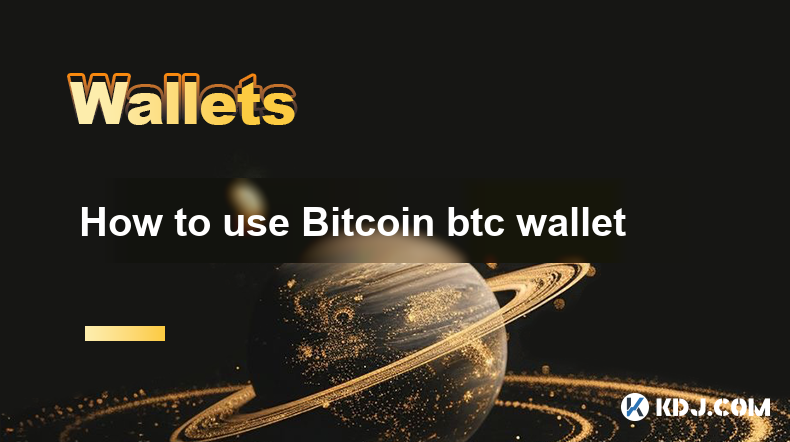
How to Use a Bitcoin (BTC) Wallet: A Comprehensive Guide
Key Points
- Understand the different types of Bitcoin wallets.
- Create a Bitcoin wallet compatible with your needs.
- Secure your Bitcoin wallet with robust security measures.
- Send and receive Bitcoin transactions effectively.
- Manage your Bitcoin wallet and monitor your funds efficiently.
Steps to Use a Bitcoin Wallet
1. Choose a Bitcoin Wallet Type
Bitcoin wallets come in various forms, each offering unique features and levels of security. Explore these main types:
- Software Wallets: Installed on your computer or mobile device, these wallets store your private keys locally. They offer convenience but also carry the risk of malware attacks.
- Hardware Wallets: Physical devices resembling USB drives that store your private keys offline, providing enhanced security.
- Paper Wallets: Physical documents containing your public and private keys printed on them, offering maximum security but limited accessibility.
- MultiSig Wallets: Wallets that require multiple approvals to spend funds, ensuring enhanced security for large amounts of Bitcoin.
2. Create a Bitcoin Wallet
Once you choose a wallet type, complete these steps to set up your Bitcoin wallet:
- Software Wallets: Download the software from a reputable source, create a new wallet, and back up your recovery phrase securely.
- Hardware Wallets: Connect the device to your computer, follow the manufacturer's instructions, and generate a recovery seed for backup.
- Paper Wallets: Use a website or tool to create and print your paper wallet, containing your public and private keys.
- MultiSig Wallets: Collaborate with trusted individuals to create a wallet, set up multiple signatures, and establish spending rules.
3. Secure Your Bitcoin Wallet
Protect your Bitcoin wallet meticulously to prevent unauthorized access:
- Encrypt Your Wallet: Set a strong password that is not easily guessable and enable encryption features if available.
- Enable Two-Factor Authentication (2FA): Add an additional layer of security by using 2FA, requiring multiple forms of identification to access your wallet.
- Backup Your Wallet: Regularly back up your wallet's recovery phrase or seed in multiple secure locations to recover your funds in case of device loss or damage.
- Store Your Wallet Offline: Keep your hardware or paper wallet offline when not in use to minimize the risk of hacking.
- Update Your Wallet Regularly: Ensure you have the latest software updates to address any security vulnerabilities.
4. Send and Receive Bitcoin Transactions
Utilize these steps to initiate and receive Bitcoin transactions:
- Sending Bitcoin: Select the "Send" option in your wallet, enter the recipient's address, specify the amount, and include an optional message.
- Receiving Bitcoin: Share your wallet's public address with the sender, who can then initiate a transaction to transfer Bitcoin to your wallet.
5. Manage Your Bitcoin Wallet
Monitor and manage your Bitcoin wallet effectively for optimal usability:
- Track Your Transactions: Review your wallet history to verify past transactions and monitor the flow of funds.
- Set Up Alerts: Set up email or SMS alerts to notify you of incoming or outgoing transactions, keeping you informed of any activity.
- Export Your Transactions: Export your wallet's transaction history into a spreadsheet or document for record-keeping and tax purposes.
- Consolidate Your Funds: Merge small amounts of Bitcoin into a single transaction to reduce transaction fees and simplify management.
FAQs
Q: Which Bitcoin wallet is the most secure?
A: Hardware wallets, such as Ledger and Trezor, offer the highest level of security by storing private keys offline.
Q: Can I store Bitcoin in a cryptocurrency exchange's wallet?
A: Exchanges like Binance and Coinbase provide wallet services, but it's generally safer to withdraw your Bitcoin and store it in a personal wallet for added control.
Q: What is a Bitcoin recovery phrase?
A: It's a set of words that allow you to recover your Bitcoin wallet if you lose access to it. Keep it secure and confidential.
Q: How can I increase the privacy of my Bitcoin transactions?
A: Use a VPN, consider using privacy-focused wallets like Wasabi or Samourai, or leverage coin mixers to obfuscate transaction details.
Q: Is it possible to recover Bitcoin sent to the wrong address?
A: Generally no, as Bitcoin transactions are irreversible. Ensure you double-check the recipient's address before sending funds.
Disclaimer:info@kdj.com
The information provided is not trading advice. kdj.com does not assume any responsibility for any investments made based on the information provided in this article. Cryptocurrencies are highly volatile and it is highly recommended that you invest with caution after thorough research!
If you believe that the content used on this website infringes your copyright, please contact us immediately (info@kdj.com) and we will delete it promptly.
- Remember When Avalanche ($AVAX) Launched Its ICO at Just $0.50? Now, Qubetics ($TICS) Presents a Similar Opportunity
- 2025-05-04 00:10:13
- Have You Ever Wondered Which Crypto Projects Will Actually Survive the Hype and Hold Long-Term Value?
- 2025-05-04 00:10:13
- Bitcoin (BTC) Price Predictions Range from $122,000 to a Staggering $700,000
- 2025-05-04 00:05:12
- Cardano Founder Charles Hoskinson Compares the Blockchain Solution's Governance System with Mainstream Politics
- 2025-05-04 00:05:12
- The meme coin mania is back—and it’s louder, weirder, and more profitable than ever
- 2025-05-04 00:00:52
- Troller Cat Presale Goes Wild with 10k% ROI as Brett Eyes $2B MarketCap and Neiro Hits ATH
- 2025-05-04 00:00:52
Related knowledge
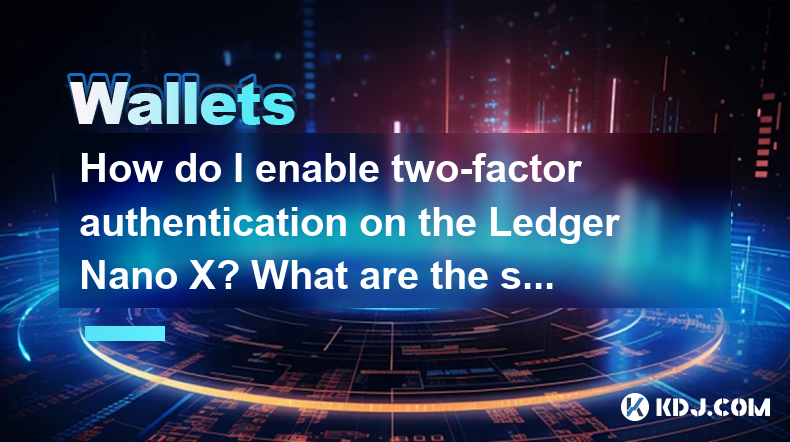
How do I enable two-factor authentication on the Ledger Nano X? What are the security options?
May 02,2025 at 09:49pm
Enabling two-factor authentication (2FA) on your Ledger Nano X is a critical step in securing your cryptocurrency assets. The Ledger Nano X offers robust security options that enhance the protection of your digital wealth. In this article, we will guide you through the process of enabling 2FA on your Ledger Nano X and explore the various security featur...

How do I send cryptocurrency with the Ledger Nano X? What are the transaction confirmation steps?
May 03,2025 at 05:01am
Sending cryptocurrency using the Ledger Nano X involves a series of steps that ensure the security and accuracy of your transactions. This process is designed to be user-friendly while maintaining the high level of security that Ledger devices are known for. In this article, we will guide you through the process of sending cryptocurrency with the Ledger...
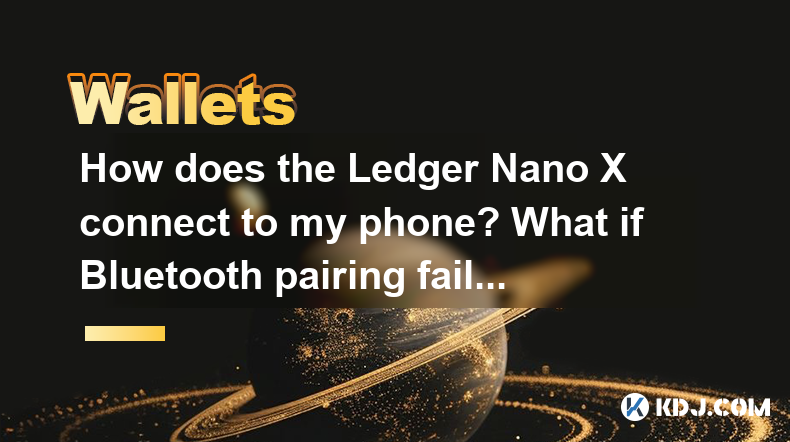
How does the Ledger Nano X connect to my phone? What if Bluetooth pairing fails?
May 02,2025 at 07:07pm
The Ledger Nano X is a popular hardware wallet designed to securely store your cryptocurrency. One of its key features is the ability to connect to your smartphone via Bluetooth, allowing for a seamless and convenient user experience. In this article, we will explore how to connect your Ledger Nano X to your phone and what to do if Bluetooth pairing fai...

How do I update the Ledger Nano X firmware? What if the update fails?
May 02,2025 at 06:00am
Updating the firmware of your Ledger Nano X is an essential process to ensure that your device remains secure and fully functional. The Ledger Nano X is a popular hardware wallet used for storing various cryptocurrencies safely. In this article, we will guide you through the step-by-step process of updating the firmware, and we will also address what to...
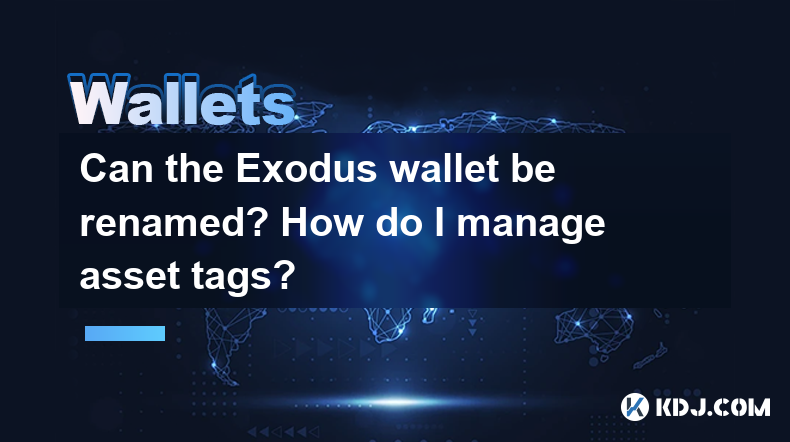
Can the Exodus wallet be renamed? How do I manage asset tags?
May 02,2025 at 11:49pm
Can the Exodus Wallet Be Renamed?Exodus wallet, a popular choice among cryptocurrency enthusiasts, offers a user-friendly interface and robust security features. One of the frequently asked questions by its users is whether the wallet can be renamed. The answer is yes, you can rename your Exodus wallet. This feature allows users to personalize their wal...
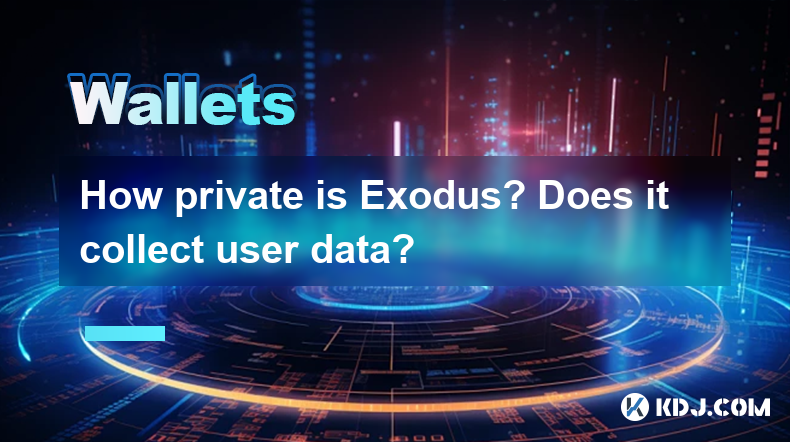
How private is Exodus? Does it collect user data?
May 03,2025 at 01:49am
How Private is Exodus? Does it Collect User Data? Exodus is a popular cryptocurrency wallet that prides itself on its user-friendly interface and robust features. However, when it comes to privacy and data collection, many users are curious about how private Exodus really is and whether it collects user data. In this article, we will delve into the priv...

How do I enable two-factor authentication on the Ledger Nano X? What are the security options?
May 02,2025 at 09:49pm
Enabling two-factor authentication (2FA) on your Ledger Nano X is a critical step in securing your cryptocurrency assets. The Ledger Nano X offers robust security options that enhance the protection of your digital wealth. In this article, we will guide you through the process of enabling 2FA on your Ledger Nano X and explore the various security featur...

How do I send cryptocurrency with the Ledger Nano X? What are the transaction confirmation steps?
May 03,2025 at 05:01am
Sending cryptocurrency using the Ledger Nano X involves a series of steps that ensure the security and accuracy of your transactions. This process is designed to be user-friendly while maintaining the high level of security that Ledger devices are known for. In this article, we will guide you through the process of sending cryptocurrency with the Ledger...

How does the Ledger Nano X connect to my phone? What if Bluetooth pairing fails?
May 02,2025 at 07:07pm
The Ledger Nano X is a popular hardware wallet designed to securely store your cryptocurrency. One of its key features is the ability to connect to your smartphone via Bluetooth, allowing for a seamless and convenient user experience. In this article, we will explore how to connect your Ledger Nano X to your phone and what to do if Bluetooth pairing fai...

How do I update the Ledger Nano X firmware? What if the update fails?
May 02,2025 at 06:00am
Updating the firmware of your Ledger Nano X is an essential process to ensure that your device remains secure and fully functional. The Ledger Nano X is a popular hardware wallet used for storing various cryptocurrencies safely. In this article, we will guide you through the step-by-step process of updating the firmware, and we will also address what to...

Can the Exodus wallet be renamed? How do I manage asset tags?
May 02,2025 at 11:49pm
Can the Exodus Wallet Be Renamed?Exodus wallet, a popular choice among cryptocurrency enthusiasts, offers a user-friendly interface and robust security features. One of the frequently asked questions by its users is whether the wallet can be renamed. The answer is yes, you can rename your Exodus wallet. This feature allows users to personalize their wal...

How private is Exodus? Does it collect user data?
May 03,2025 at 01:49am
How Private is Exodus? Does it Collect User Data? Exodus is a popular cryptocurrency wallet that prides itself on its user-friendly interface and robust features. However, when it comes to privacy and data collection, many users are curious about how private Exodus really is and whether it collects user data. In this article, we will delve into the priv...
See all articles




















































































